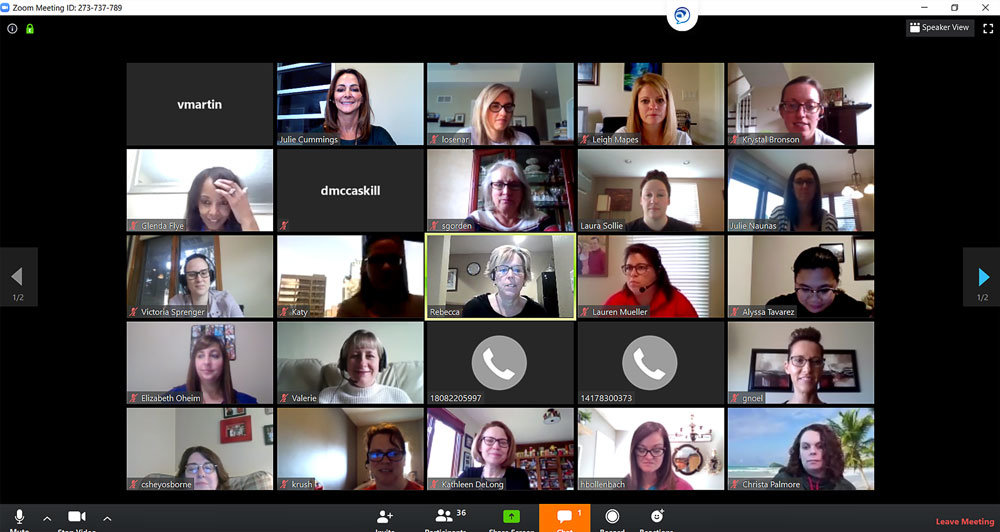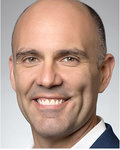YOUR BUSINESS AUTHORITY
Springfield, MO
YOUR BUSINESS AUTHORITY
Springfield, MO








Working from home has become the new normal for many businesses as city and state governments continue to call for social distancing amid the coronavirus pandemic.
But moving to a remote setting takes planning and dedication from staff members, business owners say, and there may still be issues that arise while adjusting to a new normal.
According to the federal Bureau of Labor Statistics, only 7% of workers in the United States have routine access to telework, and those who do tend to be executives and highly paid white-collar professionals.
As many more begin to make the shift to working from home, local employers and managers say communication tools, such as video software, have been key.
BKD LLP’s national office and southern Missouri practice in Springfield shifted to a telecommuting setting in mid-March, said local managing partner Gary Schafer.
“Some 40% of our Springfield employees worked outside of the office already,” Schafer said. “We definitely had to innovate as we went. We spent about a week as a firm really focusing on how we should implement this.
“We tried to equip our employees with monitors, scanners and printers to take home so they were fully prepared.”
Julie Cummings, human resources manager for BKD’s national office, said being able to replicate workspaces at home was a priority.
“There’s nothing more frustrating than trying to work but your environment is not conducive to being productive,” she said, declining to disclose investment costs.
Schafer said the accounting firm had previously used Skype for Business to meet with clients. He said the local team of over 300 also has utilized Zoom video calls and FaceTime calls.
Video platform Zoom has seen a surge of use across the country. Between Feb. 22 and March 22, application downloads increased by 1,270%, according to data from LearnBonds.com, a financial news website.
Cummings said she’s seen success with video calls as a communication tool at BKD firms across the country.
“Using the video component has really enhanced the collaboration and connection with one another, even more so than before,” she said. “We’ve got the camera going, we’re engaging and the conversations we’re having are incredible.”
While adjusting to the new normal, Schafer said he’s been recording audio messages to the company several times a week to keep employees updated on business operations and COVID-19 news. They’ve also shifted their monthly happy hours to a virtual setting.
“As an employer, it’s a scary prospect to go from having well-defined processes and a lot of structure to an environment that’s different,” Schafer said. “I have been so overwhelmed with the professionalism of our team and that we’ve been able to transition to people working from home and not missing a beat.”
Prepped to WFH
BriteCore, an insurance administration software provider, has allowed all employees to work remotely for several years, said Senior Vice President of Marketing Chastin Reynolds, and the company is helping other businesses make the shift amid COVID-19.
Reynolds said BriteCore utilizes, and recommends, multiple software tools, such as Zoom, Microsoft Teams, G-Suite and Office 365. She said a pain point companies may experience is making sure everyone has access, as well as security concerns.
“There’s a lot of decisions you have to make as a team as you move to a digital environment. Some steps companies have to take is figuring out what percentage of employees are using PCs, have remote access and the tools that can be made available online,” she said. “And in order to manage your organization, it really is critical that you have a way to document or record the decisions you’re making and how you’re moving forward.”
She also suggested employers consider web-based task managers to ensure employees are staying productive, such as Trello and Basecamp.
Jeff Bendure, JMark Business Solutions Inc. director of client relationship management, said the software technology firm uses Cisco Webex virtual meetings, Microsoft Teams and Workplace from Facebook to stay connected with each other and with clients. The company also recommends these tools to clients because of security features included with the technology, he said.
At Jack Henry & Associates Inc., CFO Kevin Williams said in an email that roughly 30% of the company’s national workforce was working remotely prior to the COVID-19 crisis and most employees have since made the transition. He said about 4% of employees have to be in a facility to do their job.
“The required technology was already in place to allow our employees to (work from home),” he said, adding the company primarily uses Microsoft Teams as a communication tool.
CoxHealth also has moved around 400 employees and counting to remote work in recent weeks, said spokeswoman Kaitlyn McConnell.
“For the most part, this has been an easy transition,” she said via email. “The health system had moved a few departments to remote work in recent months, which created a process for other departments to follow.”
Company communication includes a daily email to all employees, video meetings through Skype for Business and an intranet site to keep employees informed, McConnell said. Also, CoxHealth has implemented a twice-weekly call with 600 health system leaders to discuss the latest COVID-19 information.
Other companies that have made the shift include the city of Springfield, Mercy, Springfield Public Schools, Miller & Associates CPAs and Advisors LLC and local universities, according to Springfield Business Journal reporting.
Security measures
Bendure said security is the most important aspect to take into account for remote work.
“Anything you do, you have to view through the lens of security first,” he said, adding that remote work should be included in business continuity plans. “It’s really tough for people to be productive and be secure at the same time.”
He recommended companies utilize a virtual private network, which protects user traffic, for remote activity. Employers also should consider what devices employees should be allowed to use.
“If you don’t have that policy in place that employees have to use a company-owned device, you could have someone with spyware on their machine at home and they not even know it,” he said.
“As soon as they log on to the corporate network, now the bad guys have that information, too.”
Phishing emails related to COVID-19 have been on the rise, according to a news release from the Federal Bureau of Investigation. FBI officials said in the release people should watch for fake emails that appear to be from the Centers for Disease Control and Prevention, as well as phishing emails asking for personal information.
Bendure said employees should be aware of what these emails look like and have the right security in place to protect private information.
“All of the ‘bad guys’ are really opportunistic,” Bendure said.
“They ride on the fears of what’s going on. They want you to click that link and then they own you.”
A franchise store of a Branson West-based quilting business made its Queen City debut; Grateful Vase launched in Lebanon; and Branson entertainment venue The Social Birdy had its grand opening.

